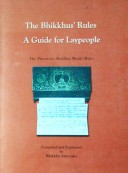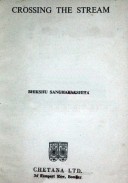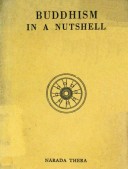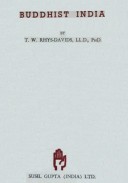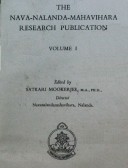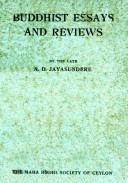Tìm Sách
Sách tiếng Anh-English >> The Bhikkhus’ Rules, A Guide For Laypeople
Thông tin tra cứu
- Tên sách : The Bhikkhus’ Rules, A Guide For Laypeople
- Tác giả : Bhikkhu Ariyesako
- Dịch giả :
- Ngôn ngữ : Anh
- Số trang : 199
- Nhà xuất bản : Taiwan-The Corporate body of the Buddha educational foundation
- Năm xuất bản : 1998
- Phân loại : Sách tiếng Anh-English
- MCB : 12100000011651
- OPAC :
- Tóm tắt :
PREFACE
Buddhist friends in Malaysia asked me to explain something about the Vinaya rules that guide the Buddhist monk’s life — in particular about monks or bhikkhus of the Theravada lineage. We monks already have several learned texts in English to help us so a simplified lay person’s guide’ now seems in order. (This work therefore deals specifically with men. As Buddhist female renuciants (nuns) find their place they will be in the best position to explain their own rules.)
My aim has been to illustrate those of the monk’s rules that also affect the lay person in some way. At first it was going to deal only with a few questions but it has grown with people’s suggestions into a more thorough work of reference. (It was originally circulated as a computer printout, and its positive reception encouraged this complete reworking and revision, incorporating many of the suggestions sent to me.) Even so, the best introduction remains a good practising bhikkhu who shows that amid the myriad things of the material world living the simple life is possible with care — hence the many rules — much as in the Buddha’s time.
The original Beginner’s Questions section has been kept (with some revision) and moved to the front as a brief overview of the sort of questions covered in the book. It refers to later explanations for more detail, which can be found not only in the main text but in the End Notes, Footnotes, Glossary and Appendices.
I also have tried to include broader explanations in the main text so that while the actual rule is faithfully reproduced — including some translation variations — the different ways in which monks actually put it into practice are also covered. Although one might think one knows all about ‘one’s bhikkhus’, on going elsewhere things are never quite the same, and sometimes in quite startling ways.
Bhikkhus do sometimes follow the rules in different ways according to their particular traditions and these pages may help to explain the whys and wherefores of their practice. My own perspective comes from twenty years as a bhikkhu in the forest monasteries of Thailand (and now more than five years in the ‘West’) so I am very aware that this guide needs more information from the traditions in other countries.
As you read through this book, it will become plain how much I have relied on other people and authorities. I wish especially to mention my gratitude to Venerable Thanissaro Bhikkhu for his great contribution through his commentary on the bhikkhus’ rules, The Buddhist Monastic Code; to Venerable Thiradhammo Bhikkhu for his manuscript of The Heritage of the Sangha; to Venerable Brahmavangso Bhikkhu for permission to quote from his Vinaya Notes; and to the Mahamakut Foundation in Bangkok for the works on the monk’s rules that they publish.
Lay people in half a dozen countries helped with advice and suggestions, and my thanks and appreciation go to all of them. I was very pleasantly surprised that they found our rules so fascinating and were willing to give so much of their time to going through the original manuscript with such care and interest. Yet on reflection, they are right to feel part of the Dhamma-Vinaya, as the Lord Buddha said:
“Bhikkhus, I praise right practice in both, whether householder or home-leaver.
‘Householder, bhikkhus, and home-leaver, if rightly practised, by reason of their right practice, are accomplishing the true way, the wholesome Dhamma.” HS ch.4 (A.I,69; M.II,197)
Please remember chat tolerance is always important even if one decides to give active support to only one group of monks. The following pages are offered solely to shed the light of understanding so they should not be used to create heat and friction through criticizing other people’s behaviour. This is the essence of the Buddha’s Teaching. A big heavy law book only too easily can be thrown at others so this guide will try to stay light and non-judgemental. This gives opportunity for broadmindedness and flexibility, so that we can include different interpretations. Thereby one may come better to appreciate and support the monastic community of one’s choice.
Finally, I hope that the same tolerance will be given to any faults and omissions found in this book. Not being enlightened or a scholar, I can only offer a gathering of other people’s work and hope that the way I have put it all together does not intrude my own views and opinions too much. (Paragraphs containing more general or personal opinions are often marked with) Therefore, any suggestions for Improvement offered in Dhamma are always welcome.
Bhikkhu Ariyesako
August 1998
TABLE OF CONTENTS
Preface………………………1
Acknowledgements………………………4
Abbreviations………………………5
Inơoduction………………………7
Part One………………………11
Beginner’s Questions………………………13
Frequendy Asked Questions………………………20
Part Two………………………29
Establishing a Background………………………29
Precepts………………………31
Bhikkhus………………………32
Becoming a Novice………………………32
Becoming a Bhikkhu………………………33
Ordination in South East Asia………………………35
The Rains Retreat………………………35
Disrobing………………………36
Buddhist Nuns………………………37
The Vinaya and the Pãtỉmokkha………………………38
Offences………………………39
Major Rule Groups of the Pãtimokkha………………………39
Committing Offences………………………42
Modernization? The Great Standards………………………43
Strictness and Blaming Others………………………44
Part Three………………………47
The Pãậmokkha Rules………………………48
(I) Harmlessness………………………49
Murder………………………49
Killing………………………49
Destroying Vegetation………………………51
(II) Relationships………………………53
Sexual Intercourse………………………53
Intimacy—Touching………………………54
Flirting………………………56
Propositioning………………………56
Matchmaking………………………57
Alone with a Woman………………………57
Talking Privately………………………60
Staying Together………………………61
Travelling Together………………………63
(III) Possessions and Offerings………………………65
The Four Requisites………………………65
What Does a Bhikkhu Need? ………………………65
Does a Bhikkhu Beg? ………………………67
How to Help; Invitation………………………67
What does a Bhikkhu Possess? ………………………69
Wrongly Receiving Gifts………………………71
What can be Offered? ………………………72
Clothing: The Robe………………………73
The Robe Offering Time………………………74
Alms Food………………………76
Begging for Food………………………76
Receiving and Eating Food………………………77
Meal Time………………………79
The Four Sorts of Edibles………………………80
Mixing Edibles………………………80
Offering Edibles………………………81
How to make an Offering………………………81
Storing Food………………………83
Meal Invitations………………………83
Meat-eating………………………85
Offering Fruit: Kapptya………………………87
Food in the Wilderness………………………88
Fruit juices………………………88
Medicines or Tonics………………………90
Lifetime Medicines………………………92
Drugs and Alcohol………………………92
Valuables and Money………………………94
Stealing………………………94
Bhikkhus and Wealth………………………95
Money………………………95
Cheques, Credit Cards, etc. ………………………98
The Menộaka Allowance………………………99
A Bhikkhu’s Steward………………………100
Buying and Selling………………………101
Barter or Trade………………………102
‘Untouchable’ Things? ………………………102
Lodgings………………………104
Luxurious Lodgings………………………104
Furniture………………………105
(IV) Right Livelihood for a Bhikkhu………………………106
Teaching Dhamma………………………106
Robbery by False Pretences………………………107
Proper Behaviour Outside………………………109
Socializing and Wrong Resort………………………111
Wrong Ways of Behaviour………………………112
Wrong Livelihood………………………113
‘Corrupting Families’………………………113
Intruding on Families………………………115
(V) Miscellaneous………………………117
Disputes………………………117
Schools of Buddhism………………………118
Etiquette………………………120
Names and Forms of Address………………………121
Appendix A: Lay Precepts………………………124
The Five Precepts………………………124
The Eight Precepts………………………125
Uposatha Observance Days………………………125
The Ten Precepts………………………126
Appendix B: The Other Patimokkha Rules………………………127
Appendix C: Pali Pronunciation………………………136
Appendix D: Examples of Vinaya Practice………………………138
End Notes………………………153
Bibliography………………………189
Glossary………………………193
Index………………………199
 Facebook
Facebook
 Google
Google
 Google+
Google+
